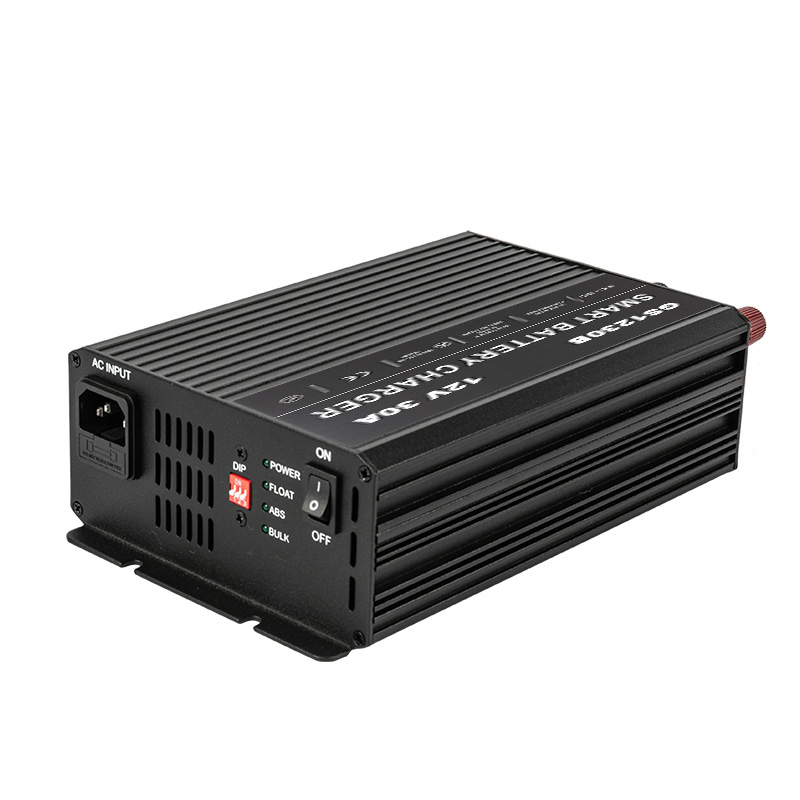Powering Up the Deep: Compatibility of AC to DC Chargers with Deep-Cycle Batteries
2023-12-29
Introduction:
Deep-cycle batteries are the workhorses of various applications, providing reliable and sustained power for extended periods. When it comes to recharging these robust energy storage units, the choice of a suitable charger is paramount. In this blog, we explore the compatibility of AC to DC chargers with deep-cycle batteries, unraveling the dynamics that make this charging duo a reliable and efficient partnership.
1. Understanding Deep-Cycle Batteries:
- Purpose: Deep-cycle batteries are designed to provide a steady and prolonged output of power over an extended period, making them ideal for applications where sustained energy delivery is crucial.
- Applications: Commonly used in renewable energy systems, marine applications, RVs, golf carts, and off-grid power setups.
2. Key Features of AC to DC Chargers:
- Voltage Transformation: AC to DC chargers are specifically designed to transform alternating current (AC) from electrical outlets into direct current (DC) suitable for charging batteries.
- Versatility: AC to DC chargers are versatile and can be adapted to charge a variety of battery types, including lead-acid, gel cell, AGM, and, importantly, deep-cycle batteries.
3. Compatibility of AC to DC Chargers with Deep-Cycle Batteries:
- Voltage Regulation:
- AC to DC chargers often come with adjustable voltage settings, allowing users to tailor the charging voltage to the specific requirements of deep-cycle batteries. This adaptability ensures that the charging process aligns with the battery manufacturer's recommendations.
- Charging Profiles:
- Deep-cycle batteries benefit from a multi-stage charging approach, and modern AC to DC chargers often incorporate different charging profiles. These profiles include bulk charging, absorption charging, and float charging, ensuring a comprehensive and efficient charging cycle for deep-cycle batteries.
- Constant Current Mode:
- The constant current phase in AC to DC chargers provides an initial surge of power, which is particularly useful for replenishing deeply discharged deep-cycle batteries. This mode allows the charger to deliver a controlled and steady current to quickly bring the battery back to a safe voltage level.
- Transition to Constant Voltage:
- As the battery voltage approaches its maximum charge level, AC to DC chargers seamlessly transition into constant voltage mode. This phase ensures that the charging voltage remains steady while the current gradually decreases, preventing overcharging and promoting a balanced charge.
4. Considerations for Optimal Charging:
- Charger Capacity:
- Selecting an AC to DC charger with an appropriate capacity is essential. The charger should be capable of delivering the required current to efficiently charge deep-cycle batteries without causing damage.
- Temperature Compensation:
- Some advanced AC to DC chargers come equipped with temperature compensation features. This ensures that the charging parameters are adjusted based on the temperature conditions, optimizing the charging process for deep-cycle batteries.
- Smart Charging Technology:
- Modern chargers often incorporate smart charging technology, which monitors the real-time condition of the battery and adjusts the charging parameters accordingly. This adaptive approach enhances the compatibility and efficiency of the charging process for deep-cycle batteries.
Conclusion:
In the realm of battery charging, the compatibility of AC to DC chargers with deep-cycle batteries is a testament to the adaptability and versatility of these chargers. As the backbone of energy storage in numerous applications, deep-cycle batteries benefit from the tailored charging profiles and adjustable parameters offered by AC to DC chargers. Whether it's powering an off-grid cabin, propelling an electric golf cart, or supporting a marine vessel, the pairing of AC to DC chargers with deep-cycle batteries ensures a reliable and efficient energy supply. Understanding this compatibility empowers users to make informed decisions when selecting chargers, fostering a seamless synergy between power sources and energy storage.



